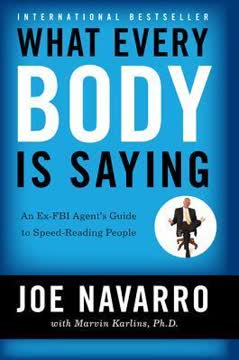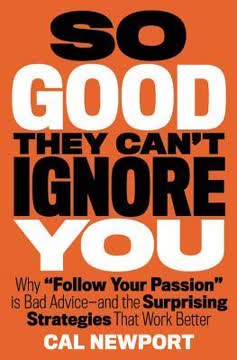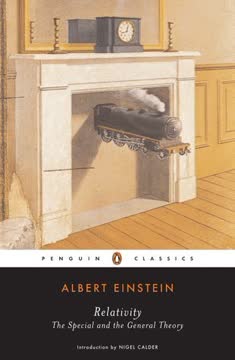Key Takeaways
1. Understand Your Readers: The Foundation of Effective Writing
Your success depends on the reader, so understand their needs.
Know your audience. Effective writing begins with a deep understanding of your readers. Identify your target audience and create detailed profiles of ideal readers. Consider their background knowledge, motivations, and potential resistance to your ideas.
Overcome the curse of knowledge. As an expert, it's easy to forget what it's like not to know your subject. Combat this by:
- Regularly interacting with people outside your field
- Testing your explanations on non-experts
- Imagining yourself explaining the topic to a complete novice
Address the reader's context. Consider:
- How much time and attention they can devote to your writing
- Their emotional state when encountering your work
- What they already know (or think they know) about the topic
2. Navigate the Knowledge Illusion and Audience Resistance
We tolerate complexity by failing to understand it. That's the illusion of understanding.
Recognize the knowledge illusion. People often overestimate their understanding of complex topics. This can lead to resistance when presented with new information that challenges their beliefs.
Strategies for overcoming resistance:
- Acknowledge and validate existing beliefs before introducing new ideas
- Frame information in terms of values that resonate with your audience
- Focus on causes and consequences rather than abstract concepts
- Use concrete examples to illustrate abstract ideas
Address misinformation tactfully. When confronting misconceptions:
- Avoid directly attacking beliefs
- Provide alternative explanations that are more compelling
- Use credible sources to support your arguments
- Emphasize shared goals and values
3. Spark Curiosity to Engage Your Readers
We are not particularly interested in subjects about which we know almost everything or practically nothing. We tend to be interested when we know quite a bit but feel that there is more to be learned.
Find the curiosity sweet spot. Balance the familiar with the novel to capture reader interest. Introduce new information by connecting it to what readers already know.
Techniques to activate curiosity:
- Pose intriguing questions
- Highlight surprising facts or contradictions
- Create knowledge gaps that readers want to fill
- Use analogies to connect unfamiliar concepts to familiar ones
Craft compelling openings. The beginning of your writing is crucial for capturing attention. Consider:
- Starting with a vivid anecdote
- Posing a thought-provoking question
- Presenting a startling statistic
- Making a bold claim that challenges conventional wisdom
4. Master the Art of Explaining Complex Ideas
If you want people to be able to pay attention, don't start with the details. Start with the key ideas and, in a hierarchical fashion, form the details around these larger notions. Meaning before details.
Structure explanations effectively. Present information in a logical, hierarchical manner:
- Start with the big picture
- Introduce key concepts
- Gradually add supporting details
Balance abstract and concrete. Alternate between high-level concepts and specific examples to maintain reader engagement and understanding.
Use repetition strategically. Reinforce key points by:
- Restating important ideas in different ways
- Using summary sections or bullet points
- Incorporating visual aids or diagrams to illustrate concepts
Simplify without oversimplifying. Strive for clarity without sacrificing accuracy. Break down complex ideas into digestible chunks, but avoid glossing over important nuances.
5. Harness the Power of Stories and Analogies
Stories synchronize our brains.
Incorporate storytelling. Stories engage multiple areas of the brain, making information more memorable and relatable. Use narratives to:
- Illustrate abstract concepts
- Provide real-world context
- Evoke emotions that reinforce your message
Craft effective analogies. Well-chosen analogies can bridge the gap between the familiar and the unfamiliar. When creating analogies:
- Ensure the comparison is familiar to your audience
- Highlight relevant similarities
- Acknowledge limitations of the analogy
Balance narrative and exposition. While stories are powerful, don't rely on them exclusively. Integrate storytelling with clear explanations and analysis to provide a comprehensive understanding of your topic.
6. Cultivate a Compelling Writing Style
The easier you make it for readers to understand your topic, the smarter they think you are.
Develop a conversational tone. Write as if you're explaining the topic to a friend, but with more precision and structure than casual speech.
Avoid jargon and unnecessary complexity. Replace field-specific terminology with plain language whenever possible. When technical terms are necessary, define them clearly.
Use figurative language judiciously. Metaphors and similes can illuminate complex ideas, but choose them carefully to avoid confusion or unintended connotations.
Vary sentence and paragraph length. Mix short, punchy sentences with longer, more complex ones to maintain reader interest and provide rhythm to your writing.
7. Build Credibility Through Humanity and Humility
Credibility is granted by the reader, not asserted by the writer. Earn it rather than insisting in it.
Demonstrate expertise through clear explanation. Instead of listing credentials, prove your knowledge by making complex topics accessible and engaging.
Share personal experiences. Appropriate anecdotes can humanize your writing and create connections with readers. Be selective and ensure stories directly support your main points.
Acknowledge limitations and uncertainties. Admitting what you don't know can paradoxically increase reader trust. It demonstrates intellectual honesty and a commitment to accuracy.
Respect your readers. Avoid condescension or lecturing. Treat your audience as intelligent partners in exploring the topic.
8. Use Humor to Connect and Enlighten
Combined with scientific skill and compassion, humor offers a humanizing dimension in healthcare that is too valuable to be overlooked.
Incorporate appropriate humor. Well-placed humor can:
- Relieve tension when discussing serious topics
- Make abstract concepts more relatable
- Increase reader engagement and memorability
Focus on fun, not forced humor. Aim for a lighthearted tone rather than trying to be a comedian. Subtle wordplay or amusing analogies often work better than overt jokes.
Use self-deprecating humor cautiously. Poking fun at yourself can make you more relatable, but avoid undermining your credibility on the topic at hand.
Balance humor with substance. Ensure that humor enhances rather than distracts from your main points. Use it as a tool to illuminate ideas, not as an end in itself.
Last updated:
FAQ
What's "Writing to Be Understood" about?
- Purpose: "Writing to Be Understood" by Anne H. Janzer is a guide for nonfiction writers who aim to explain complex topics clearly and engagingly to a general audience.
- Focus: The book explores techniques and strategies that successful nonfiction writers use to connect with readers, such as storytelling, analogies, and tone.
- Structure: It is divided into three parts: understanding your readers, explaining complicated ideas, and avoiding boring writing.
- Goal: The ultimate goal is to help writers communicate effectively, ensuring their ideas are not only read but also understood and remembered.
Why should I read "Writing to Be Understood"?
- Improve Communication: If you're a nonfiction writer, this book offers practical advice on making your writing more accessible and engaging.
- Reader Connection: It provides insights into understanding your audience's needs and how to tailor your writing to meet those needs.
- Practical Techniques: The book is filled with actionable techniques, such as using analogies and stories, to make complex ideas more relatable.
- Broaden Impact: By applying the methods in the book, you can reach a wider audience and ensure your message is effectively communicated.
What are the key takeaways of "Writing to Be Understood"?
- Audience Understanding: Knowing your audience is crucial; tailor your writing to their knowledge level and interests.
- Clarity and Engagement: Use stories, analogies, and repetition to make complex ideas clear and engaging.
- Tone and Style: Adjust your writing style to convey the right tone, whether it's conversational, authoritative, or humorous.
- Humility and Humanity: Show vulnerability and respect for your readers to build trust and credibility.
How does Anne H. Janzer suggest understanding your readers?
- Identify Ideal Readers: Create detailed profiles of your target audience to guide your writing decisions.
- Empathy Development: Use cognitive empathy to understand your readers' perspectives and emotional contexts.
- Reader Context: Consider the reader's situation, such as their knowledge level and motivation for reading.
- Feedback and Interaction: Engage with real people to test your ideas and refine your understanding of your audience.
What methods does Anne H. Janzer recommend for explaining complicated ideas?
- Use of Analogies: Analogies help readers understand abstract concepts by relating them to familiar experiences.
- Storytelling: Stories make abstract ideas relatable and memorable by engaging multiple parts of the brain.
- Repetition: Reiterate key points in varied ways to reinforce understanding and retention.
- Concrete Examples: Balance abstract ideas with concrete details to reduce cognitive load and aid comprehension.
How can writers avoid being boring according to "Writing to Be Understood"?
- Tone and Style: Choose a tone that suits your audience and subject, and use a style that keeps readers engaged.
- Imagery and Metaphors: Use vivid imagery and metaphors to make your writing more interesting and relatable.
- Humor: Incorporate humor to lighten complex topics and make your writing more enjoyable.
- Personal Connection: Share personal anecdotes and show vulnerability to connect with readers on a human level.
What role does curiosity play in engaging readers, according to Anne H. Janzer?
- Curiosity as a Tool: Curiosity can be used to draw readers in by creating a knowledge gap they want to fill.
- Engaging Introductions: Start with intriguing questions or stories to pique readers' interest from the beginning.
- Balance of Known and Unknown: Find a sweet spot between what readers know and what they want to learn.
- Satisfying Curiosity: Ensure that the curiosity you spark is satisfied with clear and insightful explanations.
How does Anne H. Janzer define and use tone and style in writing?
- Voice vs. Tone: Voice is your unique way of expressing yourself, while tone is how the reader perceives your writing.
- Style Elements: Adjust paragraph length, sentence structure, point of view, and vocabulary to convey the desired tone.
- Conversational Writing: Aim for a conversational tone that is clear and engaging, not a direct transcription of speech.
- Avoiding Jargon: Minimize jargon to make your writing accessible and prevent alienating readers.
What are some effective repetition techniques in "Writing to Be Understood"?
- Rephrase Key Points: Reiterate important ideas using different words and contexts to reinforce understanding.
- Structural Repetition: Use titles, subtitles, and summaries to highlight and revisit key concepts.
- Value-Added Repetition: Add new insights or examples when repeating ideas to maintain reader interest.
- Learning and Memory: Recognize that repetition aids learning and helps readers retain information.
How does Anne H. Janzer suggest using humor in nonfiction writing?
- Engagement and Disarmament: Humor engages readers and makes complex topics more approachable.
- Self-Deprecating Humor: Use humor to show vulnerability and build a connection with readers.
- Balance and Appropriateness: Ensure humor serves the content and is appropriate for the audience and topic.
- Hope and Positivity: Combine humor with hope to leave readers with a positive impression.
What are the best quotes from "Writing to Be Understood" and what do they mean?
- "Your success depends on the reader, so understand their needs." This emphasizes the importance of audience awareness in effective writing.
- "Stories are not just stories; they are the best invention ever created for delivering mental models that drive behavior." This highlights the power of storytelling in shaping understanding and memory.
- "Credibility is granted by the reader, not asserted by the writer." This underscores the idea that trust and authority must be earned through clear and respectful communication.
- "The end of a laugh is followed by the start of a listen." This illustrates how humor can open readers up to new ideas and information.
How can writers find their personal style according to Anne H. Janzer?
- Experimentation: Try different techniques and methods to see what resonates with you and your audience.
- Balance and Adaptation: Find a balance between your natural voice and the needs of your readers.
- Feedback and Reflection: Use feedback from readers to refine your style and improve your writing.
- Continuous Learning: Keep exploring new ideas and methods to evolve your personal writing style over time.
Review Summary
Writing to Be Understood receives overwhelmingly positive reviews for its practical advice on nonfiction writing. Readers appreciate Janzer's insights on audience engagement, explaining complex ideas, and avoiding boredom. The book is praised for its clear organization, conversational tone, and valuable tips from various experts. Many reviewers find it helpful for both novice and experienced writers, highlighting its focus on cognitive science and reader psychology. Some critics note that certain sections may be basic for advanced writers, but overall, the book is highly recommended for anyone looking to improve their nonfiction writing skills.
Similar Books










Download PDF
Download EPUB
.epub digital book format is ideal for reading ebooks on phones, tablets, and e-readers.




